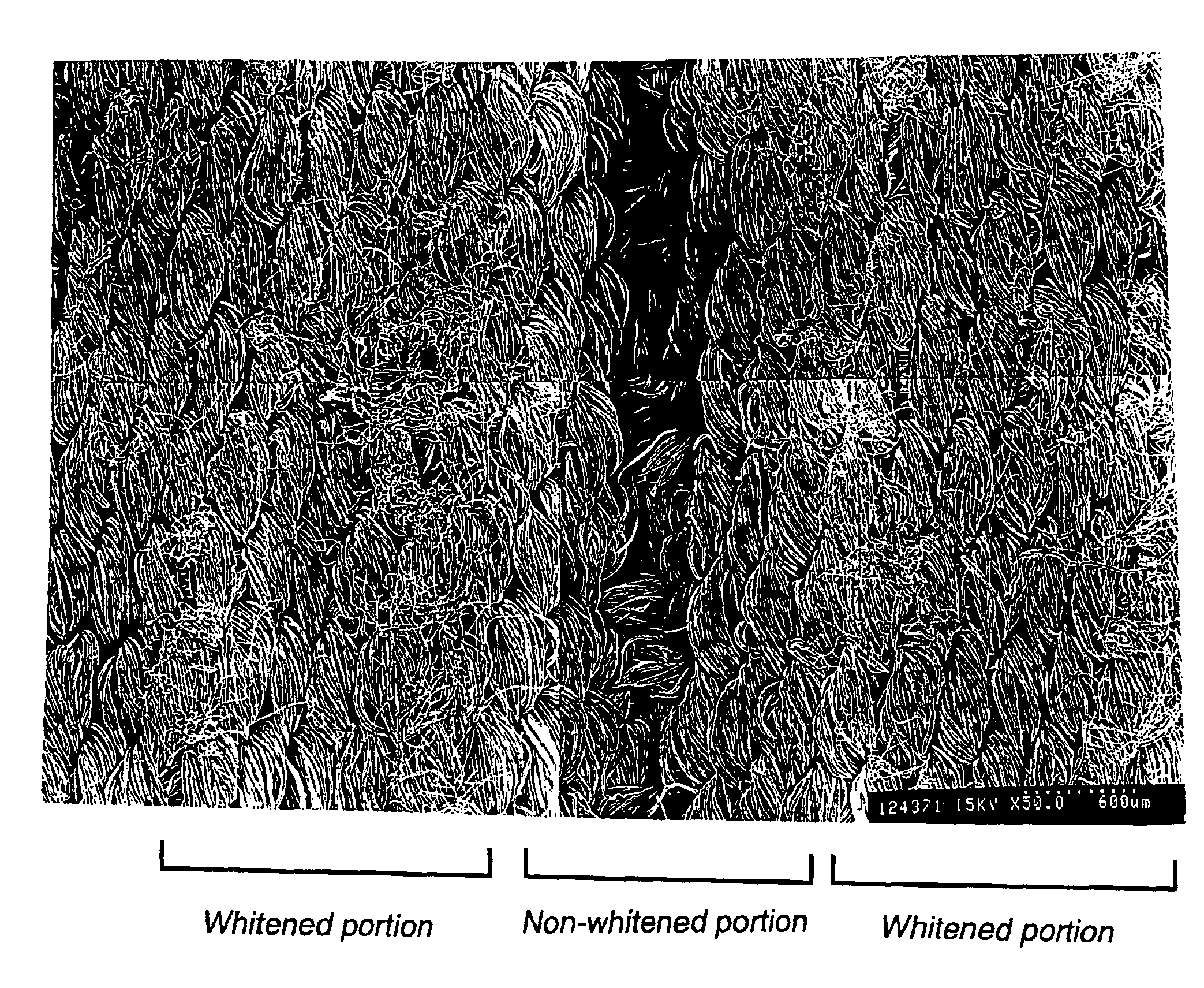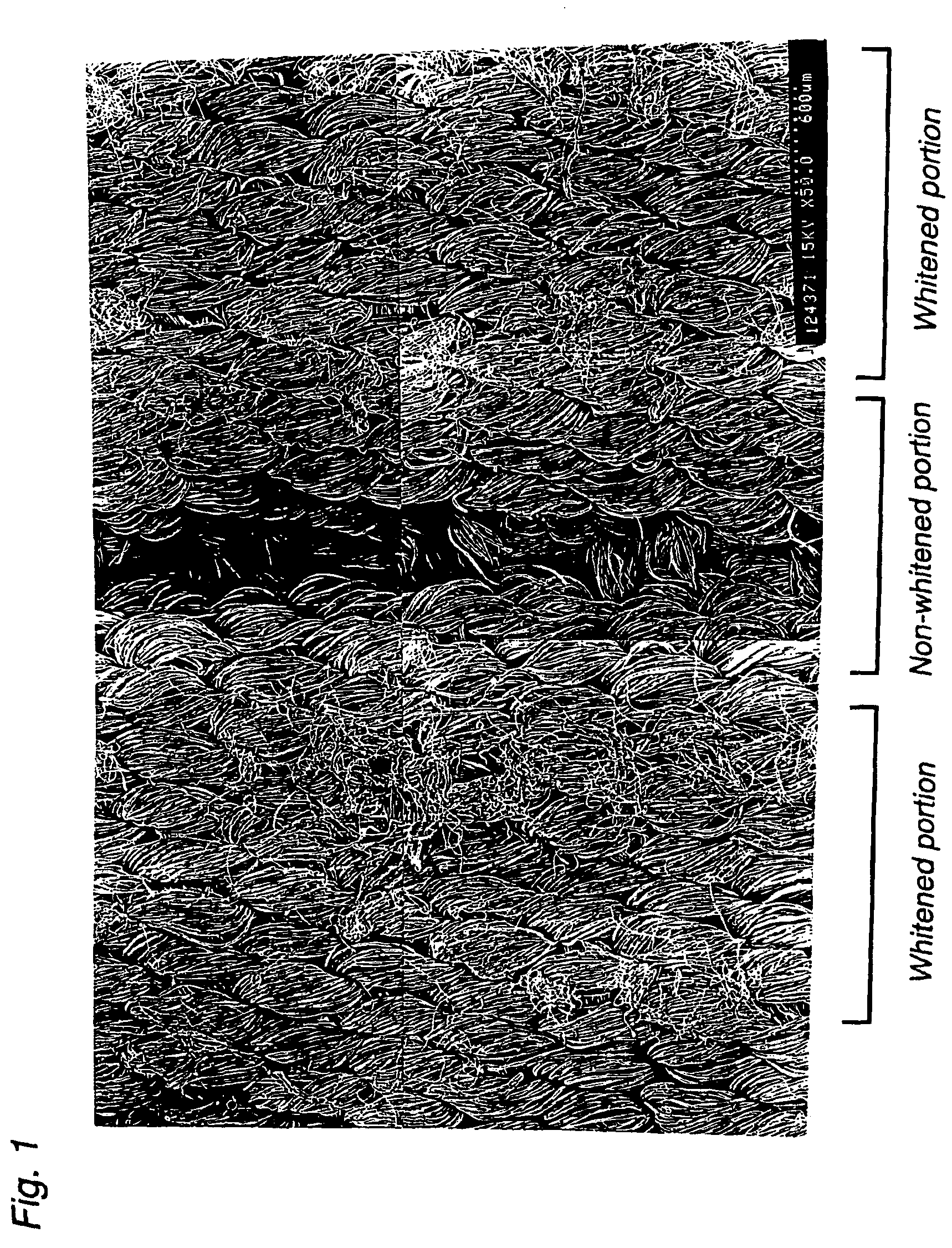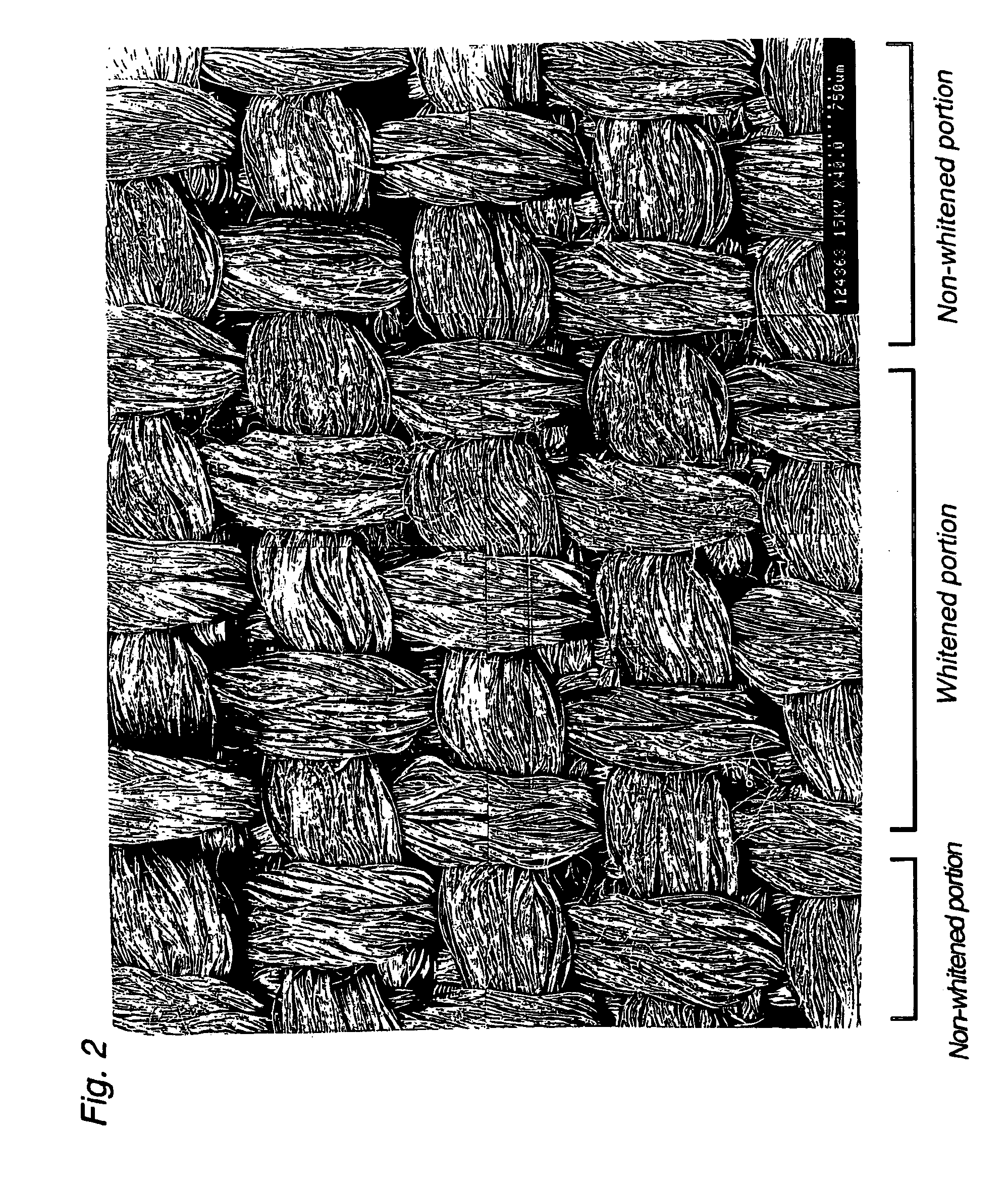Denim-like article of clothing and method of producing the same
a technology of applied in the direction of dyeing process, weaving, textile parts treatment, etc., can solve the problems of mainly natural fibers in denim-like cloths and sewn fabrics, no proposal has been made for cloths or sewn fabrics that are fully composed of synthetic fibers, and heavy weight, etc., to achieve the effect of displaying weariness
- Summary
- Abstract
- Description
- Claims
- Application Information
AI Technical Summary
Benefits of technology
Problems solved by technology
Method used
Image
Examples
example 1
A circular section high contraction thread of a polyethylene terephthalate having a shrinkage percentage in boiling water of 20% and a size of 84 dtex-12 filaments was subjected to false-twist with a drawn yarn of a polyester island-in-sea type conjugated filament yarn (island component: polyethylene terephthalate, number of islands: 8, sea component: a polyethylene terephthalate copolymer containing 4% by mole of sodium 5-sulfoisophthalate, ratio of sea to island: 2:8) having a size of 84 dtex-36 filaments. Two of the resulting false-twist yarn were subjected to secondary twist at a twist number of 800 T / M to thereby yield a warp.
Separately, a thick and thin yarn having a size of 167 dtex-48 filaments was subjected to false twist and secondary twist at a twist number of 800 T / M to thereby yield a weft. The prepared warp and weft were woven into a HOSOKORU woven fabric (pin-wale corduroy) having a width of 198.5 cm and a weaving density of 145.times.67 yarns per inch.
The HOSOKORU wo...
example 2
A false-twist textured yarn (one-heater woolly nylon) having a size of 84 dtex-36 filaments was subjected to secondary twist at a twist number of 1200 T / M to thereby yield a warp.
Separately, a circular section high contraction thread of a polyethylene terephthalate having a shrinkage percentage in boiling water of 20% and a size of 33 dtex-6 filaments was subjected to conjugate twist with the island-in-sea type conjugated filament yarn used in Example 1 to thereby yield yarns. Two of the resulting yarns were further subjected to combined twist at a twist number of 800 T / M to thereby yield a weft. The above-prepared warp and weft were woven into a weft splush fabric having a width of 200 cm and a weaving density of 125.times.80 yarns per inch.
The prepared woven fabric was then processed under the same conditions as in Example 1 to thereby yield a finishing-set cloth having a width of 146 cm and a finishing density of 171.times.105 yarns per inch. The resulting cloth was sewn into a j...
example 3
The circular section high contraction thread and the island-in-sea type conjugated filament yarn used in Example 1 were combined in the ratio of 1:1 and woven to yield yarns, and two of the resulting yarns were subjected to secondary twist at a twist number of 800 T / M to thereby yield a warp.
Separately, the thick and thin yarn used in Example 1 was subjected to false-twist and secondary twist at a twist number of 200 T / M to thereby yield a weft. The above-prepared warp and weft were woven into a corduroy woven fabric having a width of 198.5 cm and a weaving density of 145.times.67 yarns per inch.
The prepared woven fabric was then processed under the same conditions as in Example 1 to thereby yield a finishing-set cloth having a width of 150 cm and a finishing density of 192.times.90 yarns per inch. The resulting cloth was sewn into a jacket, and the jacket was treated and assessed under the same condition as in Example 1. The conditions and results are shown in Tables 1 and 2.
PUM
| Property | Measurement | Unit |
|---|---|---|
| roughness index | aaaaa | aaaaa |
| roughness index | aaaaa | aaaaa |
| roughness index | aaaaa | aaaaa |
Abstract
Description
Claims
Application Information
 Login to View More
Login to View More - R&D
- Intellectual Property
- Life Sciences
- Materials
- Tech Scout
- Unparalleled Data Quality
- Higher Quality Content
- 60% Fewer Hallucinations
Browse by: Latest US Patents, China's latest patents, Technical Efficacy Thesaurus, Application Domain, Technology Topic, Popular Technical Reports.
© 2025 PatSnap. All rights reserved.Legal|Privacy policy|Modern Slavery Act Transparency Statement|Sitemap|About US| Contact US: help@patsnap.com



